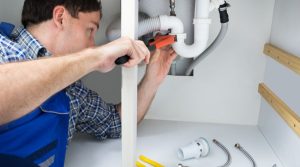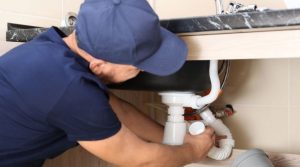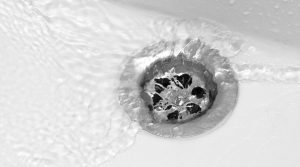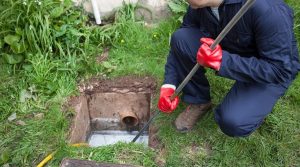Repiping your home might sound like a daunting project, but it’s a critical investment in your property’s value and your family’s comfort. If you live in Jersey City, with many homes built decades ago, chances are your plumbing system could use an upgrade. This guide will break down the costs, material options, and methods for repiping to help you make an informed decision.
Key Takeaways
- Repiping Costs Vary: Factors such as home size, pipe material, replacement method, and the extent of replacement significantly impact the cost.
- Pipe Material Options: Copper offers durability but is expensive, while PEX and CPVC provide cost-effective alternatives.
- Trenchless Technology: Modern techniques like pipe relining can save time and money for specific cases.
- Complete Overhaul Recommended: Replacing all old pipes, especially galvanized ones, is a long-term solution to prevent leaks and costly repair
Factors That Influence Repiping Costs
- Home Size
- The bigger your house, the more pipes are needed to complete the job. Larger homes naturally drive up costs due to the increased material and labor required.
- Cost can often be calculated on a price-per-square-foot basis, making it easier to estimate expenses.
- Pipe Material Choice
- Copper Pipes: Renowned for their strength and longevity, copper pipes are ideal for both indoor and outdoor installations. However, they come with a higher price tag.
- PEX Pipes: Flexible and affordable, PEX pipes are quick to install but are unsuitable for outdoor use and can degrade under UV exposure.
- CPVC Pipes: A cost-effective and corrosion-resistant choice, CPVC pipes are easy to install but can sometimes suffer from manufacturing inconsistencies.
- Replacement Method
- Traditional methods involve manually removing old pipes, which can be labor-intensive and costly.
- Trenchless techniques, such as pipe relining, offer faster and less disruptive solutions, often saving time and money.
- Extent of Replacement
- Some homeowners opt for partial replacements to save money, replacing only exposed pipes. However, this can leave aging pipes behind walls and floors, which may lead to future issues.
- A full replacement is generally recommended for homes with old lead or galvanized pipes.
Is Replacing Galvanized Pipes More Expensive?
While the costs of replacing galvanized pipes are comparable to other materials, it’s often advised to replace the entire system rather than just visible sections. Galvanized pipes are prone to rust, leaks, and water contamination, making a complete overhaul a safer and more cost-effective solution.
Comparing Pipe Materials
- Copper Pipes
- Pros: Durable, long-lasting, and resistant to bacteria.
- Cons: Expensive and vulnerable to freezing temperatures.
- Best For: Homes requiring robust plumbing solutions.
- PEX Pipes
- Pros: Flexible, affordable, and easy to install.
- Cons: Not UV-resistant and susceptible to size changes due to temperature fluctuations.
- Best For: Indoor installations where budget is a concern.
- CPVC Pipes
- Pros: Resistant to corrosion and scale buildup; cost-effective.
- Cons: Can burst under pressure and may vary in quality.
- Best For: Homes with water quality concerns and tight budgets.
Trenchless Technology: A Modern Alternative
Trenchless pipe relining is an innovative method to address plumbing issues without the need for extensive digging. This technology involves inserting a resin-coated lining into the old pipe, which hardens to form a new interior surface. It’s particularly useful for hard-to-reach pipes and can extend the lifespan of your existing plumbing system.
Benefits of Trenchless Technology:
- Minimal disruption to your home and landscaping.
- Faster completion times compared to traditional methods.
- Often more cost-effective for targeted repairs.
FAQs About Repiping Your Home
Q1: How do I know if my home needs repiping?
- Signs include discolored water, low water pressure, frequent leaks, and visible corrosion on exposed pipes.
Q2: How long does a repiping project take?
- Depending on the size of your home and the method used, it can take anywhere from a few days to a week.
Q3: Will repiping increase my home’s value?
- Yes, modern plumbing is a significant selling point for potential buyers and can improve your home’s overall value.
Q4: Is repiping covered by homeowner’s insurance?
- It depends on your policy. Typically, sudden and accidental damage is covered, but wear-and-tear or preventive replacements are not.
Q5: What is the lifespan of new pipes?
- Copper pipes can last 50+ years, while PEX and CPVC pipes have lifespans of 25-50 years, depending on maintenance and environmental factors.
Q6: Can I stay in my home during the repiping process?
- Yes, in most cases, you can remain in your home, although water service may be temporarily disrupted.
Q7: How much does repiping cost on average?
- Costs typically range from $4,000 to $15,000, depending on factors like home size, pipe material, and labor rates in your area.
Q8: Are there financing options available?
- Many plumbing companies offer financing plans to help homeowners manage the cost of repiping projects.
Conclusion
Repiping your home is an essential step in maintaining a safe and efficient plumbing system. Whether you opt for durable copper or cost-effective PEX or CPVC, updating your plumbing can save you from future headaches and expenses. Jersey City homeowners should consider the long-term benefits of a complete overhaul, especially for older homes with galvanized pipes. For expert guidance and tailored solutions, contact BJC Plumbers Jersey City today. Don’t wait for plumbing problems to escalate—invest in peace of mind with a reliable repiping project.







